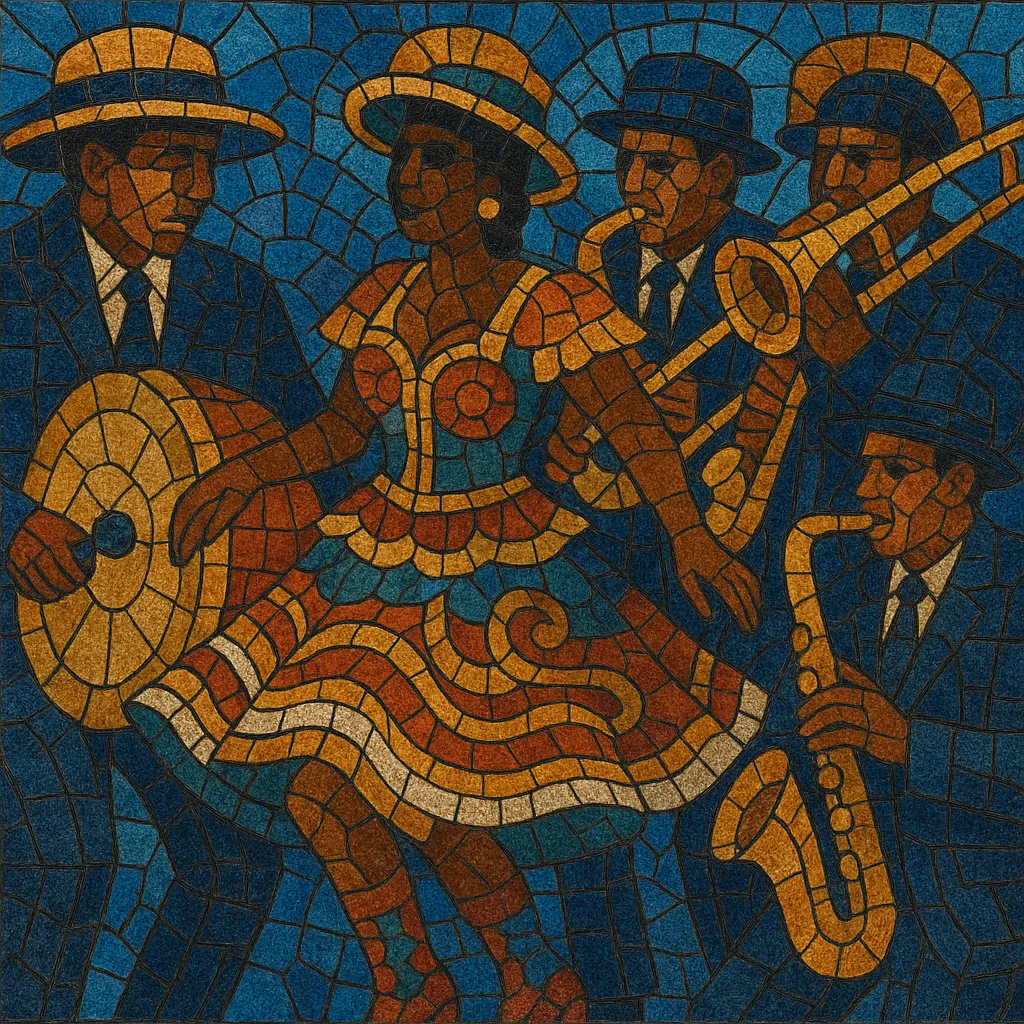Morenada is a traditional Bolivian parade-dance music from the Andean Altiplano, best known for its stately, heavy-stepping groove and powerful brass-band sound. It is closely tied to the Carnival of Oruro and urban fiestas in La Paz and El Alto, where large fraternities of dancers process in ornate costumes and masks.
Musically, morenada features slow-to-moderate duple meter, emphatic bass drum accents, bright unison brass melodies, and call‑and‑response fanfares. Its timbre is dominated by trumpets, trombones, saxophones, sousaphone/tuba, and an armor of marching percussion (bass drum, snare, cymbals), often joined by matracas (ratchets) that add a distinctive clacking pulse.
The rhythm and movement evoke the weighty steps of long processions and commemorate Afro‑Bolivian and Aymara histories, blending indigenous Andean melodic contours with the sonic presence of modern brass bands.
Morenada emerged in the Bolivian Altiplano during the 1800s, in cities such as Oruro and La Paz and their Aymara hinterlands. Oral histories and iconography link the dance and its heavy footwork to Afro‑Bolivian experiences in mining and labor, while its melodies and ceremonial role draw from Aymara/Quechua festive practices. Early ensembles were smaller and more rustic, but the genre coalesced around slow duple rhythms, communal procession, and masked performance.
In the 20th century, the rise of "bandas de bronce" (brass bands) reshaped morenada’s sound. Trumpets, trombones, saxophones, and sousaphones, supported by bass drum, snare, and cymbals, standardized the genre’s powerful outdoor projection. Oruro’s Carnival—today a UNESCO‑recognized tradition—became a flagship stage where large fraternities of dancers and bands codified choreographies, costumes, and musical structures.
Post‑1950s urbanization brought new fraternities and larger ensembles in La Paz and El Alto. Recordings and radio spread emblematic morenadas nationwide, establishing the style as a symbol of Bolivian identity alongside other Andean genres. Composers and arrangers wrote signature tunes for specific fraternities, and distinctive bass‑drum patterns and ratchet (matraca) textures became hallmarks.
From the late 20th century onward, Andean folk groups and pop‑folklore acts adapted morenada motifs for stage performance and recording, blending it with guitar, charango, and studio production. Diasporic communities now stage morenadas abroad, and the style occasionally crosses into worldbeat and neofolklore settings while remaining rooted in its ceremonial and processional function.


